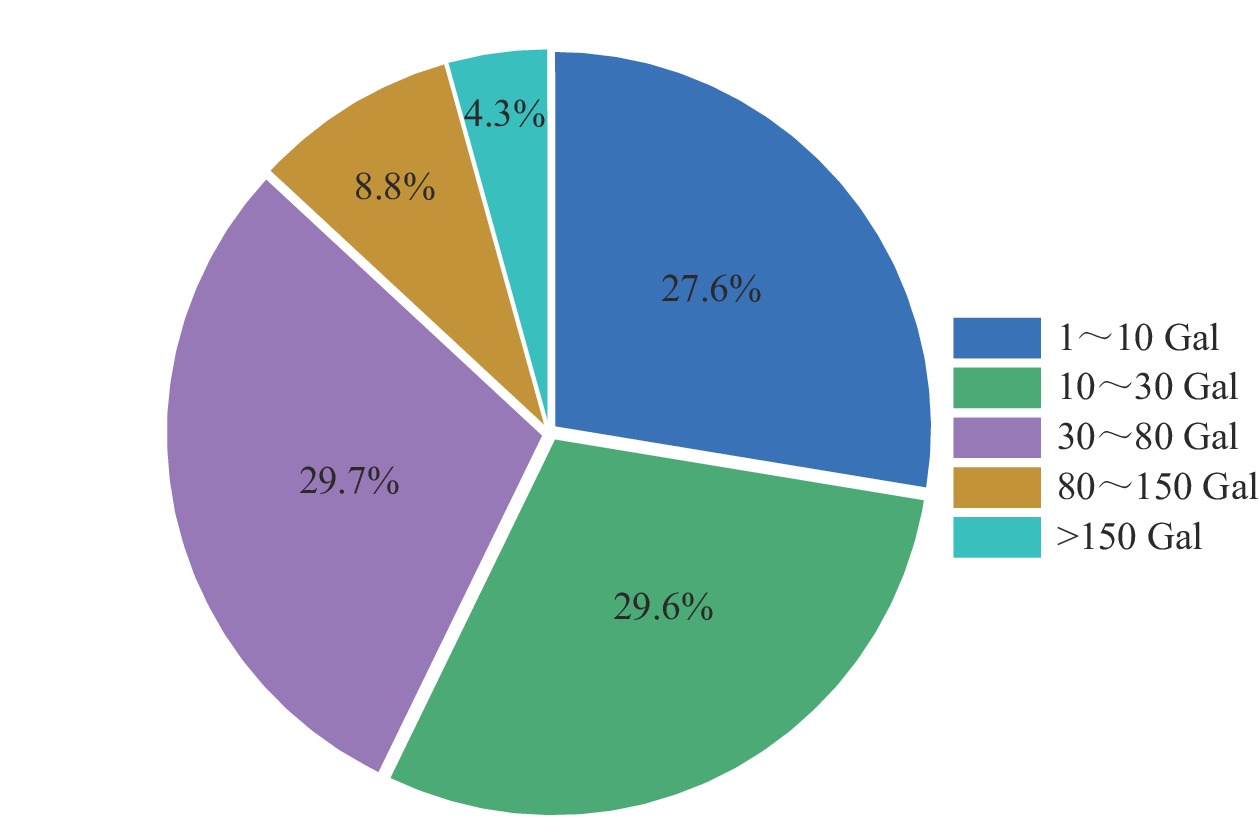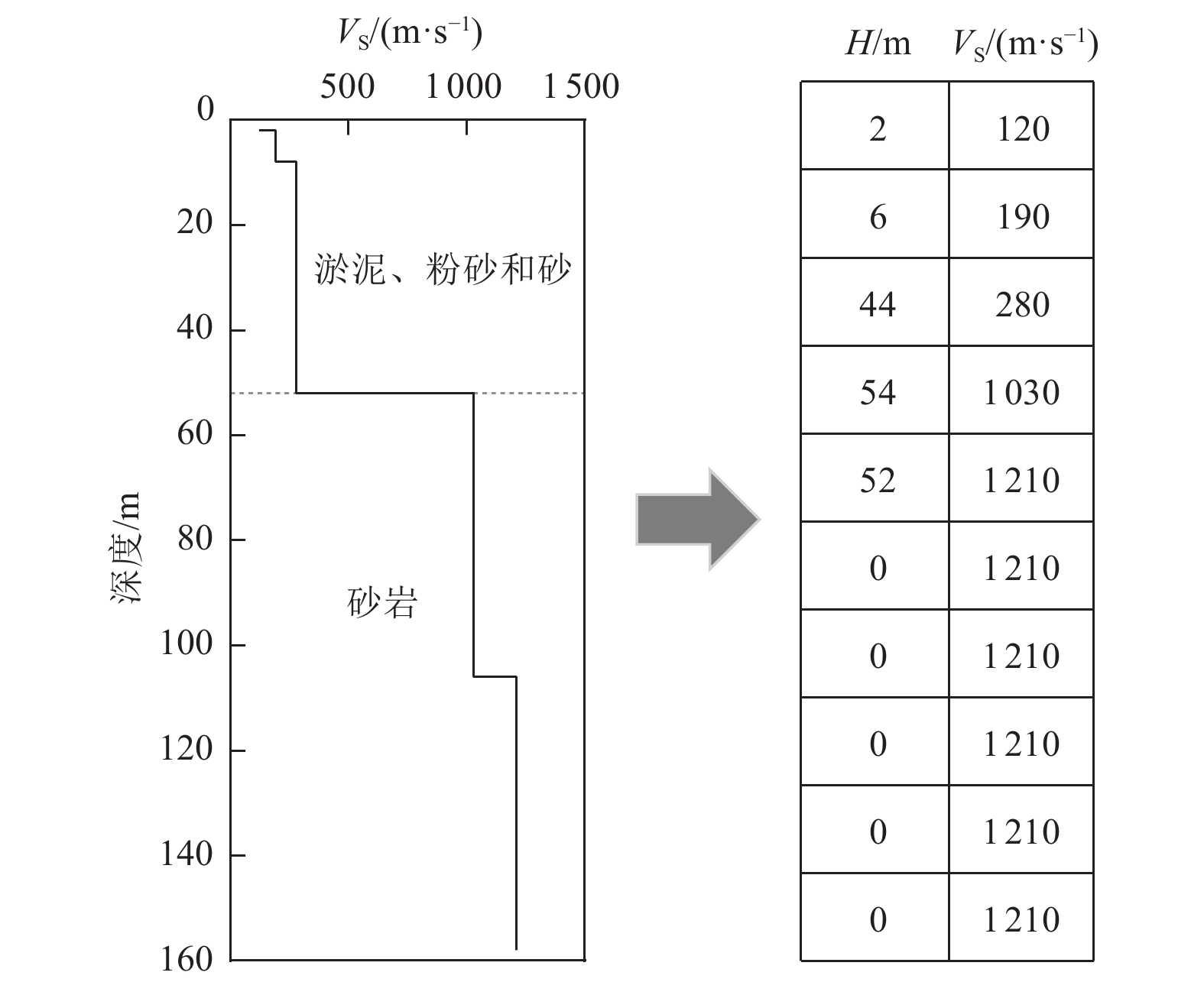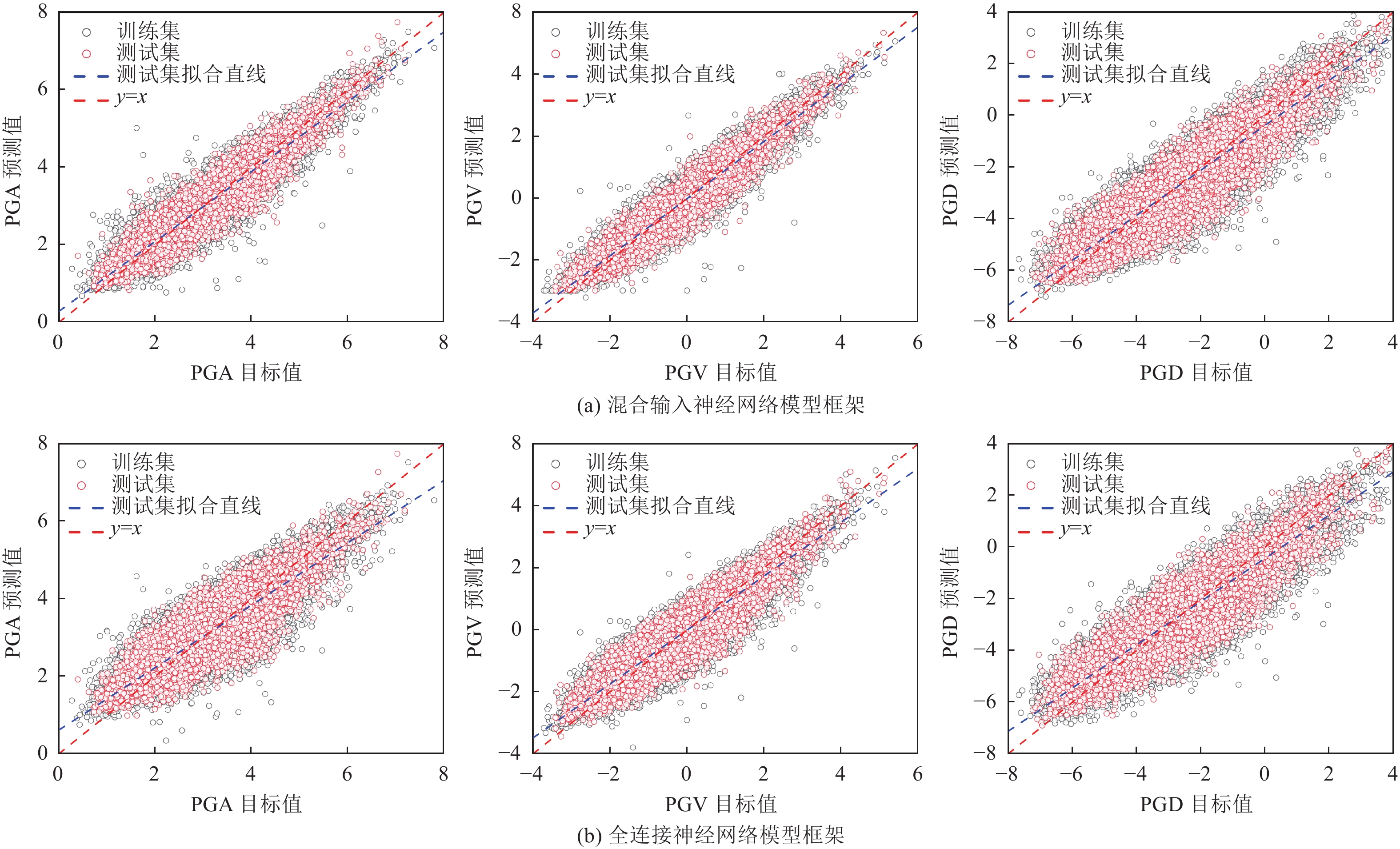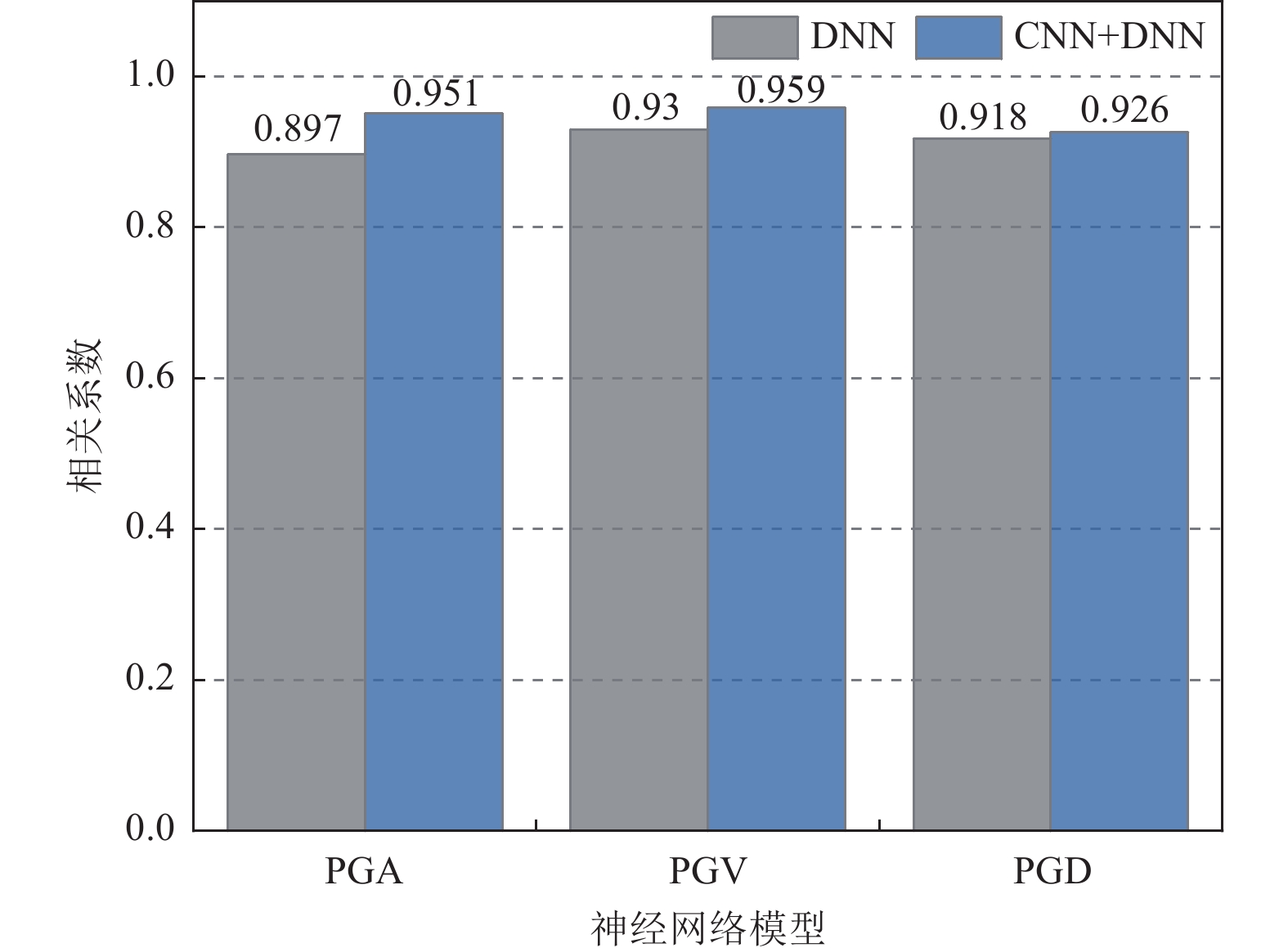Study on the Prediction of Ground Motion Amplitude Based on Deep Neural Network
-
摘要: 地震动预测模型是灾害分析和结构设计的重要组成部分,近年来神经网络技术愈发成熟地被应用在该预测模型的开发上,但多为使用地表以下30 m范围内土层等效剪切波速(VS30)作为场地输入参数的单层全连接神经网络模型,忽略了完整土层厚度及剪切波速信息对地震动幅值的影响。本文采用卷积神经网络及全连接神经网络混合模型,选用日本KiK-net台网记录到的
3174 次地震共计39192 条地震动记录,构建了一种基于深度神经网络框架的地表地震动幅值预测模型。该模型的输入参数为震级、震源深度、震中距、场地各土层厚度、剪切波速信息和井下地震动幅值,输出为相应的地表地震动幅值(PGA或PGV或PGD)。对模型进行训练并计算其各项评价指标予以评估,结果表明:(1)该混合神经网络模型的决定系数超过了0.85,模型残差服从正态分布,均值残差接近于0,模型表现出无偏的特性。(2)与现有经验公式相比,混合网络模型的PGA、PGV和PGD预测精度分别提升约26.9%、16.5%和11.6%。与使用VS30作为场地参数的全连接神经网络模型相比,该框架下模型预测值与真实值的Person相关系数及各项评价指标均有所提升,模型残差的均值和标准差更小,PGA、PGV和PGD模型预测精度提升约6.3%、3.9%和3.4%,能更好地对地震动幅值进行预测。Abstract: The ground motion prediction model is a critical component in disaster analysis and structural design. In recent years, neural network technology has increasingly been applied to develop such prediction models. However, most existing models are single-layer fully connected neural networks that use the equivalent shear wave velocity of soil layers within 30 meters below the surface (VS30) as the site input parameter. This approach often overlooks the impact of the complete soil layer thickness and shear wave velocity information on ground motion amplitude. In this paper, a combined convolutional neural network (CNN) and fully connected neural network model is proposed. A dataset comprising39192 ground motion records from3174 earthquakes recorded by KiK-net is used to build a ground motion amplitude prediction model based on deep neural network technology. The model's input parameters include the magnitude, source depth, epicenter distance, thickness of each soil layer, shear wave velocity information, and underground ground motion amplitude. The output is the corresponding ground motion amplitude (PGA, PGV, or PGD). The model is trained and its evaluation indexes are calculated. The results indicate that: (1) The coefficient of determination (R2) of the mixed input neural network model exceeds 0.85. The model residual follows a normal distribution, and the mean residual is close to 0, demonstrating an unbiased characteristic. (2) Compared to the empirical formula, the prediction accuracy of the hybrid network model improves by 26.9%, 16.5%, and 11.6% for PGA, PGV, and PGD, respectively. (3) Compared to the traditional fully connected neural network model using VS30 as the site parameter, the Pearson correlation coefficient and various evaluation indexes of the predicted values and actual values show improvement. The mean and standard deviation of the model residual are smaller, and the prediction accuracy of the PGA, PGV, and PGD models improves by about 6.3%, 3.9%, and 3.4%, respectively. This combined neural network model can better predict seismic amplitude, taking into account the complete soil layer information. -
表 1 数据参数范围
Table 1. Data parameter range
输入参数 范围 震级MW 1.9 ~ 9.0 震源深度/km 3 ~682 震中距/km 0.22~ 1217.50 地表峰值加速度/Gal 1~ 2430 表 2 NERPH场地分类标准
Table 2. NERPH site classification criteria
地表以下30 m范围内土层等效剪切波速
VS30 /(m·s−1)场地类别 VS30 > 1500 A 760<VS30≤ 1500 B 360<VS30≤760 C 180<VS30≤360 D VS30≤180 E 表 3 各神经网络模型散点拟合斜率
Table 3. Scatter fitting weight of neural network models
网络模型 PGA PGV PGD 训练集 测试集 训练集 测试集 训练集 测试集 DNN 0.800 0.802 0.870 0.866 0.841 0.836 CNN+DNN 0.899 0.903 0.922 0.922 0.876 0.870 表 4 不同模型评价指标
Table 4. Evaluation indexes of different models
参数 模型 MSE MAE R2 误差/% PGA CNN+DNN 1.62×10−3 3.12×10−2 0.901 15.3% DNN 3.26×10−3 4.48×10−2 0.805 21.6% 经验公式 4.82×10−3 5.91×10−2 0.490 42.2% PGV CNN+DNN 1.50×10−3 3.00×10−2 0.918 43.6% DNN 2.41×10−3 3.89×10−2 0.868 47.5% 经验公式 4.93×10−3 6.01×10−2 0.421 60.1% PGD CNN+DNN 3.40×10−3 4.50×10−2 0.853 61.3% DNN 3.70×10−3 4.70×10−2 0.836 64.7% 经验公式 5.22×10−3 6.31×10−2 0.396 72.9% 表 5 各网络模型残差的均值、方差、标准差统计
Table 5. Statistics of mean, variance and standard deviation of residuals of neural network models
网络模型 PGA PGV PGD 均值 方差 标准差 均值 方差 标准差 均值 方差 标准差 DNN −0.022 0.237 0.486 −0.021 0.231 0.480 −0.017 0.569 0.754 CNN+DNN 0.019 0.119 0.344 −0.018 0.139 0.373 0.015 0.518 0.720 表 6 混合网络模型在各场地中残差的均值、方差、标准差统计
Table 6. Statistics of mean, variance and standard deviation of residuals of mixed network models
场地类型网络模型 PGA PGV PGD 均值 方差 标准差 均值 方差 标准差 均值 方差 标准差 B 0.023 0.123 0.351 0.005 0.138 0.372 0.009 0.489 0.699 C 0.027 0.123 0.350 −0.008 0.151 0.389 0.039 0.538 0.734 D 0.014 0.098 0.313 −0.019 0.121 0349 −0.002 0.486 0.697 E 0.323 0.181 0.425 −0.050 0.155 0.394 0.110 0.662 0.814 -
薄景山,李秀领,刘红帅,2003. 土层结构对地表加速度峰值的影响. 地震工程与工程振动,23(3):35−40. doi: 10.3969/j.issn.1000-1301.2003.03.006Bo J. S., Li X. L., Liu H. S., 2003. Effects of soil layer construction on peak accelerations of ground motions. Earthquake Engineering and Engineering Vibration, 23(3): 35−40. (in Chinese) doi: 10.3969/j.issn.1000-1301.2003.03.006 董凯月,2020. 基于深度神经网络的地下地震动参数预测研究. 哈尔滨:哈尔滨工业大学.Dong K. Y. ,2020. Study on the Prediction of underground motion parameters based on depth neural network. Harbin:Harbin University of Technology. (in Chinese) 胡安冬,张海明,2020. 机器学习在地震紧急预警系统震级预估中的应用. 地球物理学报,63(7):2617−2626. doi: 10.6038/cjg2020N0070Hu A. D., Zhang H. M., 2020. Application of machine learning to magnitude estimation in earthquake emergency prediction system. Chinese Journal of Geophysics, 63(7): 2617−2626. (in Chinese) doi: 10.6038/cjg2020N0070 胡进军,谢礼立,2005. 地震动幅值沿深度变化研究. 地震学报,27(1):68−78. doi: 10.3321/j.issn:0253-3782.2005.01.008Hu J. J., Xie L. L., 2005. Variation of earthquake ground motion with depth. Acta Seismologica Sinica, 27(1): 68−78. (in Chinese) doi: 10.3321/j.issn:0253-3782.2005.01.008 吕悦军,彭艳菊,兰景岩等,2008. 场地条件对地震动参数影响的关键问题. 震灾防御技术,3(2):126−135. doi: 10.3969/j.issn.1673-5722.2008.02.003Lv Y. J., Peng Y. J., Lan J. Y., et al., 2008. Some key problems about site effects on seismic ground motion parameters. Technology for Earthquake Disaster Prevention, 3(2): 126−135. (in Chinese) doi: 10.3969/j.issn.1673-5722.2008.02.003 万永革,李鸿吉,1995. 人工神经网络在地球物理中的应用综述. 国际地震动态,16(1):9−14.Wan Y. G., Li H. J., 1995. An overview of the application of artificial neural network in geophysics. Recent Developments in World Seismology, 16(1): 9−14. (in Chinese) 徐龙军,谢礼立,胡进军,2006. 地下地震动工程特性分析. 岩土工程学报,28(9):1106−1111. doi: 10.3321/j.issn:1000-4548.2006.09.011Xu L. J., Xie L. L., Hu J. J., 2006. Analysis on engineering characteristics of sub-ground motions. Chinese Journal of Geotechnical Engineering, 28(9): 1106−1111. (in Chinese) doi: 10.3321/j.issn:1000-4548.2006.09.011 薛俊伟,刘伟庆,王曙光等,2013. 基于场地效应的地震动特性研究. 地震工程与工程振动,33(1):16−23.Xue J. W., Liu W. Q., Wang S. G., et al., 2013. Research on ground motion characteristics considering site conditions. Earthquake Engineering and Engineering Vibration, 33(1): 16−23. (in Chinese) 于子叶,储日升,盛敏汉,2018. 深度神经网络拾取地震P和S波到时. 地球物理学报,61(12):4873−4886. doi: 10.6038/cjg2018L0725Yu Z. Y., Chu R. S., Sheng M. H., 2018. Pick onset time of P and S phase by deep neural network. Chinese Journal of Geophysics, 61(12): 4873−4886. (in Chinese) doi: 10.6038/cjg2018L0725 Ahmad I., El Naggar M. H., Khan A. N., 2008. Neural network based attenuation of strong motion peaks in Europe. Journal of Earthquake Engineering, 12(5): 663−680. doi: 10.1080/13632460701758570 Atkinson G. M., 2001. An alternative to stochastic ground-motion relations for use in seismic hazard analysis in eastern North America. Seismological Research Letters, 72(2): 299−306. doi: 10.1785/gssrl.72.2.299 Borcherdt R. D. , 2012. VS30-A site-characterization parameter for use in building Codes, simplified earthquake resistant design, GMPEs, and ShakeMaps. In: The 15th World Conference on Earthquake Engineering. Lisbon: USGS. Chicco D., Warrens M. J., Jurman G., 2021. The coefficient of determination R-squared is more informative than SMAPE, MAE, MAPE, MSE and RMSE in regression analysis evaluation. PeerJ Computer Science, 7: e623. doi: 10.7717/peerj-cs.623 Derras B., Bard P. Y., Cotton F., 2014. Towards fully data driven ground-motion prediction models for Europe. Bulletin of Earthquake Engineering, 12(1): 495−516. doi: 10.1007/s10518-013-9481-0 Dhanya J., Raghukanth S. T. G., 2018. Ground motion prediction model using artificial neural network. Pure and Applied Geophysics, 175(3): 1035−1064. doi: 10.1007/s00024-017-1751-3 Dokht R. M. H., Kao H., Visser R., et al., 2019. Seismic event and phase detection using time-frequency representation and convolutional neural networks. Seismological Research Letters, 90(2A): 481−490. doi: 10.1785/0220180308 Kerh T., Chu D., 2002. Neural networks approach and microtremor measurements in estimating peak ground acceleration due to strong motion. Advances in Engineering Software, 33(11-12): 733−742. doi: 10.1016/S0965-9978(02)00081-9 Khosravikia F. , Zeinali Y. , Nagy Z. , et al. , 2018. Neural network-based equations for predicting PGA and PGV in Texas, Oklahoma, and Kansas. In: Brandenberg S. J. , Manzari M. T. , eds. , Geotechnical Earthquake Engineering and Soil Dynamics V: Seismic Hazard Analysis, Earthquake Ground Motions, and Regional-Scale Assessment. Austin: American Society of Civil Engineers, 538−549. Quinino R. C., Reis E. A., Bessegato L. F., 2013. Using the coefficient of determination R2 to test the significance of multiple linear regression. Teaching Statistics, 35(2): 84−88. doi: 10.1111/j.1467-9639.2012.00525.x Schober P., Boer C., Schwarte L. A., 2018. Correlation coefficients: appropriate use and interpretation. Anesthesia & Analgesia, 126(5): 1763−1768. Shahriari B., Swersky K., Wang Z. Y., et al., 2016. Taking the human out of the loop: a review of Bayesian optimization. Proceedings of the IEEE, 104(1): 148−175. doi: 10.1109/JPROC.2015.2494218 Thomas S., Pillai G. N., Pal K., et al., 2016. Prediction of ground motion parameters using randomized ANFIS (RANFIS). Applied Soft Computing, 40: 624−634. doi: 10.1016/j.asoc.2015.12.013 Wang Y. W., Li X. J., Wang Z. F., et al., 2021. Deep learning for P-wave arrival picking in earthquake early warning. Earthquake Engineering and Engineering Vibration, 20(2): 391−402. doi: 10.1007/s11803-021-2027-6 Zhu W. Q., Beroza G. C., 2019. PhaseNet: a deep-neural-network-based seismic arrival-time picking method. Geophysical Journal International, 216(1): 261−273. -



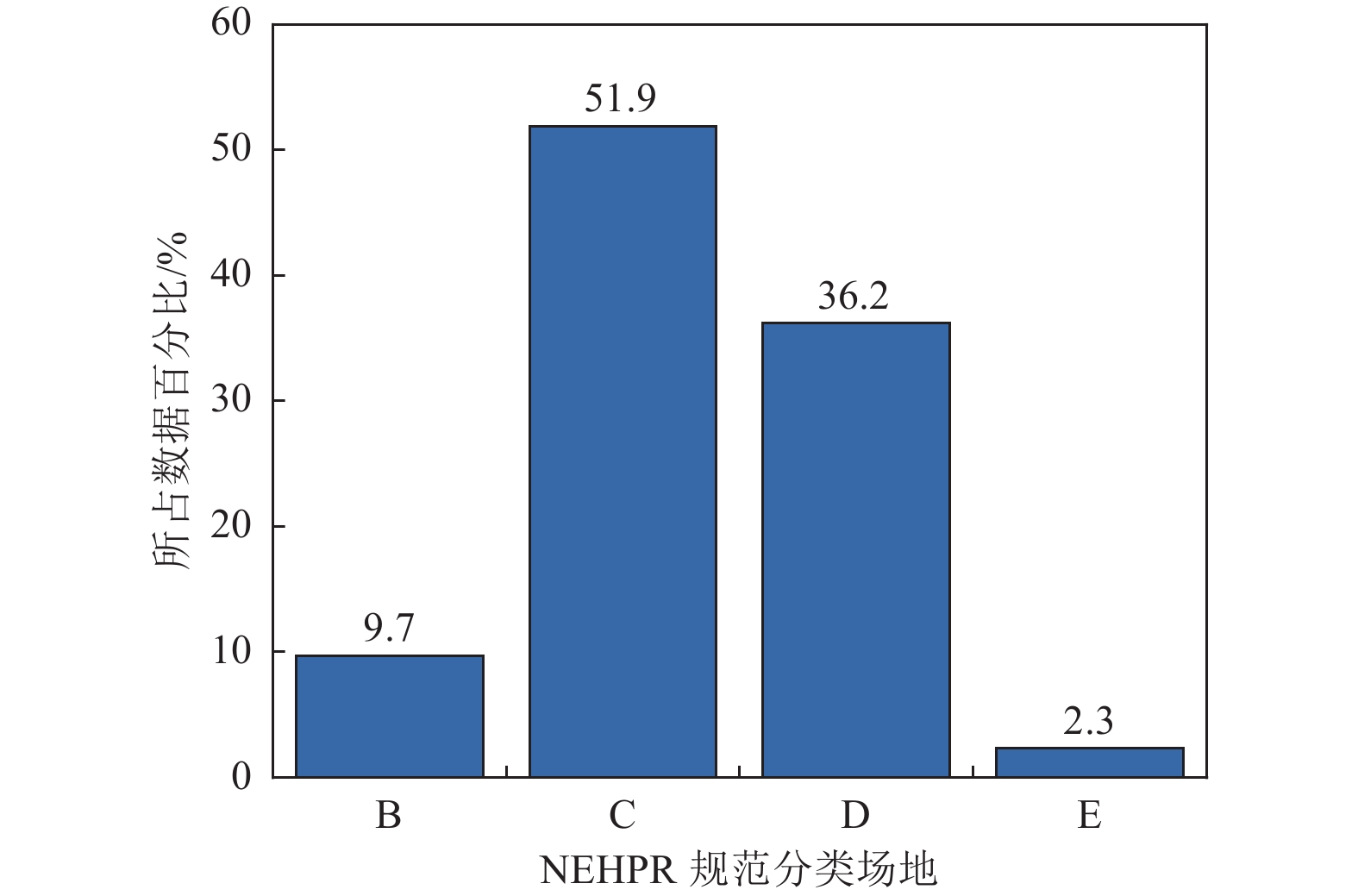
 下载:
下载:
